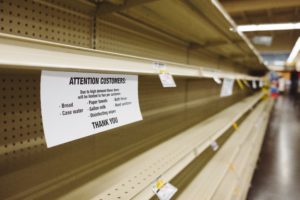Everything You Need to Know About Corporate ESG Reporting Trends
Environmental, Social and Governance (ESG) analysis can help you to identify risks and opportunities for growth.
What is an ESG Rating?
Environmental, Social and Governance (ESG) ratings are essentially a framework for analyzing and assessing a company’s sustainability score and position in relation to its peers. The environmental category examines how much water, energy, and non-renewable resources a company uses in production and day-to-day operations in addition to how much waste it creates. The environmental efficiency and sustainability factors of their score give investors a realistic idea of whether a company can continue to exist successfully in a future where energy and water are increasingly scarce. Companies earn extra kudos for actually improving the environment around them rather than being a burden on natural resources.
Social scores are based on how a company treats its clients, workers, and minorities. Does the company treat its clients respectfully? Does it operate under the assumption that clients deserve a high-quality product or service rather than products that are built to break in a few months, or a service that provides clients with the bare minimum? Does the company treat its employees as well as it treats its clients? This particular metric is increasingly more important with each passing month. Finally, does the company hire a diverse labor pool and serve a diverse customer base? Social scores, as we can all see, are an incredibly important aspect of staying in business in the current environment.
Governance scores are tabulated based on how well-run and disciplined a company might be. How is the company structured? What are its policies? Without looking at its balance sheet, is the company successful and consistent in its performance and policies? Are women paid as much as men, and are its CEOs receiving huge annual bonuses while lower level staff struggle to get by? And finally, how does the company affect broader society at large?
ESG Pre-COVID-19 – Prioritized Profits
ESG ratings are good at comparing companies to each other, but they aren’t perfect. They don’t tell investors whether a company exists to do good or which aspect is currently more important in the public’s eye in the current times. It doesn’t take a reading of the environment with which a company is doing business at any particular time, and it doesn’t grade on a bell curve based on current events.
Before COVID-19, how a company treated its employees wasn’t perceived as being more important than any other metric. Business students pre-2020 were taught that paying employees more wouldn’t make them any happier with their jobs. Praise, it was taught, was how you make an employee happy and willing to take on more and more work while keeping wages the same and taking away benefits.
When it came to environmental factors, businesses were investing in token improvements for the sake of their public relations campaigns while neglecting to make any real steps toward true sustainability. Young environmentalists grumbled about pollution and climate change while CEOs laughed in the face of their discontent. Business structures placed profits above all else. In many ways, the pandemic has been an equalizing factor.
ESG in 2020 – A Shield Against Losses?
In the first half of 2020, analysts published articles stating a company’s ESG score was an indicator of whether a business would survive the pandemic. Customers love a company that treats its customers well, employs a diverse group of people, and looks after the environment. They thought that doing business ethically was going to insulate businesses from failure during the difficulties to come. Some economic writers even coined the term “ESG vaccine.” While it’s true that consumers do love a conscientious company, these days they’re asking themselves whether they really need that product. They’re considering how hard it is to find it on store shelves and whether it’s possible to find it somewhere else for a better price point before they open their wallets.
March 2020 marked the beginning of a sort of revolution for businesses. Panic ensued because no one knew how deadly this pandemic would or wouldn’t be. Luxury products and services took a huge hit while consumer spending skyrocketed on essential services, pharmaceuticals, food and dry goods, and bare essentials. The mindset of consumers completely changed. Everything became about survival and how to make one’s family get through these times safely.
What neither business owners nor reporters failed to see coming was the wave of discontent surrounding years of stagnant wages and diminishing benefits packages. 2020 marked the beginning of what would become a workers’ revolution. People began to realize that companies really don’t care about them, and their discontent grew. Employee dissatisfaction hit an all-time high, but nobody wanted to quit their jobs for the fear that they wouldn’t be able to find another one.
Business owners cared less about saving the environment and more about keeping their doors open while wave after wave of shutdowns and quarantines battered their businesses. Everyone was more concerned about hanging on for dear life than buying a pair of couture shoes. Those who were lucky enough to do so holed up with their families and worked from home. Essential workers were forced to tough it out in the workplace while carrying the weight of the economy on their shoulders. These very difficult months took a huge toll on workers and business owners alike.
ESG in 2021 – Not a Miraculous Shield Against Harm
By early 2021, the entire country had changed. Hundreds of thousands of workers had died, but everyone was so exhausted by news and deaths that they became desensitized to it. Essential workers’ discontent grew as their wages remained stagnant, benefits became more expensive while providing less benefit, some company’s profits boomed, environmental concerns took a back burner, and inflation soared. More and more people started to strike because they simply weren’t willing to line CEOs’ pockets at their own expense anymore. The supply chain broke, and some aspects of life, like picking up prescriptions or finding bread flour at supermarkets, became bizarrely difficult events that ate up entire weekends. The Everything Shortage started.
Luxury brands were hurting more than ever and some sadly went under. Logistics companies, healthcare facilities, and essential products manufacturers started facing the consequences of ignoring employees’ needs for decades. In late 2021, workers decided that if a company’s products aren’t being made by well-compensated and happy employees then they aren’t going to be made at all. Not only are workers banding together for better wages, but they’re also standing up for workers in other industries as well. Logistics workers need to have better work/life balance and compensation, or products aren’t going to make it to store shelves. Consumerist behavior can wait until workers are treated better, and that’s final.

In times like these, products on the shelf need to make sense. Luxury products weren’t exactly flying off the shelves. People need products which can make their lives safer and easier. Inflation is forcing consumers to be much more selective about their purchases. If brands aren’t adapting to meet the times and providing essential products, it doesn’t matter whether they make their products from recycled materials or hire a diverse workforce. Their sales are going to suffer.
Has a high ESG score acted as a vaccine against losses? Yes and no. Companies whose CEOs decide to provide a minimum wage of $70,000 per year, a year of maternity or paternity leave, or restore benefits to pre-1975 levels are getting mile after mile of free press and booming sales while companies who aren’t doing those things are shutting down in the face of strikes and labor shortages. Enough people have died of COVID-19 that there’s plenty of wiggle room for employees to quit their jobs and find another one relatively easily. In this regard, a high ESG score is a vaccine against losses. In other areas like environmental sustainability and corporate governance, it’s more of a wash. Don’t disregard these factors though. Times like these won’t last forever.
ESG Trends Going into 2022 – How Important is it to Invest Ethically?
Gen Zers are finding their voice and realizing how much power they have. What they want more than anything is for their elders holding power to act like they care about their future, and that includes reversing environmental atrocities and wrongdoing against certain populations. Social media platforms are giving voice and a lot of consumer power to young people who’ve never had that kind of sway before. Millennials, who’ve been burdened by the unbearable weight of student loan debt and insufficient wages since entering the workforce, are starting to seize their power and fight back as well. Older generations are taking massive amounts of heat for hoarding wealth, destroying the environment, and worshiping profits. To put it simply, they’re getting a bad rap, but it’s not totally undeserved.

In the coming years, the survival of businesses will be greatly influenced by social consciousness and fixing damage that has been done. Companies are facing societal and environmental reckoning. Businesses are going to have to hold employees in higher esteem and put their money where their mouths are concerning wages and benefits. If products are going to make it to store shelves at all, logistics companies and producers of consumables will have to cut the purse strings loose and let that money flow. The days of stagnant wages and consumerism at the cost of environmental well-being are over. Pay living wages and improve practices or employees will roast marshmallows over the embers of former businesses.
Environmental sustainability is going to come back into the forefront after wage and benefit battles are over. Token improvements aren’t going to cut it, and that’s not for lack of public relations best efforts. Non-renewable resources are skyrocketing in price and availability, so companies are going to have to invest in switching over to clean energy whether they like it and are ready for it or not. Reliance on fossil fuels will be unaffordable. Companies have been warned for decades that this day would come. The time is now.
2022 will mark a remarkable season of one perfect storm after the next for businesses and consumers. ESG scores really are an indication of whether a company will survive or go down in flames in the future. Paying attention to these factors is absolutely vital to staying in business in the coming years.
Photos by Alex Eckerman and Wesley Tingey.
![]() Savage Brands believes in unleashing the good inherent within all organizations. Business results are driven by connecting with people at the belief level. That’s why we align everything a company says and does with its Purpose through a proven process that links strategy and execution with “why.” We solve the challenges corporate America faces by building tribal loyalty from the inside out, focusing on people first to deliver authentic brand experiences. Savage builds purposeful brands, communications, leaders and cultures.
Savage Brands believes in unleashing the good inherent within all organizations. Business results are driven by connecting with people at the belief level. That’s why we align everything a company says and does with its Purpose through a proven process that links strategy and execution with “why.” We solve the challenges corporate America faces by building tribal loyalty from the inside out, focusing on people first to deliver authentic brand experiences. Savage builds purposeful brands, communications, leaders and cultures.
